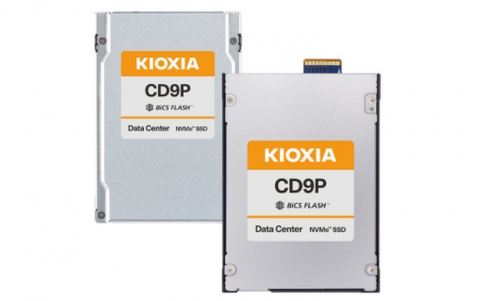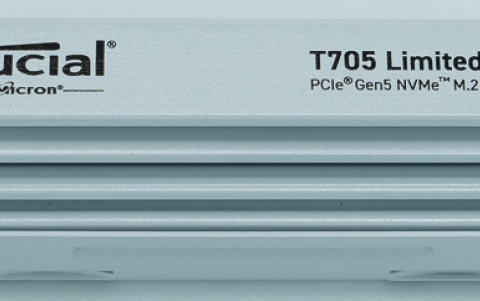
Hitachi-Maxell to Bring Holographic Storage This Year
Hitachi-Maxell will reportedly ship the first holographic storage media by
Christmas, according to executives of the Japanese company.
In an interview, Rich D'Ambrise, director of technical marketing at Maxell, said
that 300-Gbyte holographic disks will begin shipping either in November or
December, as InPhase Technologies, the developer of the holographic technology,
said last year.
D'Ambrise also indicated that the company will move to a second-generation, 800-Gbyte disc in 2008, and has targeted a 1.6-Tbyte removable cartridge by 2010.
Maxell and Inphase Technologies, one of the developers and supporters of the holographic storage technology have demonstratied working holographic recorders in the past. An actual ad from a Turner Broadcasting program was recorded onto an InPhase prototype holographic recorder using holographic media produced by Hitachi Maxell. This recording was then used to feed a broadcast server, marking the first time a holographic recording has been recorded, played back, and broadcast successfully. As explained by Mr. Ron Tarasoff, Turner's vice president of broadcast technology, "This was done to investigate the feasibility of using holographic storage for broadcasting TV content."
InPhase indicated that the first incarnation of the InPhase technology would be used for archival purposes, and D'Ambrise indicated that that will still be the case: media will be roughly $120 to $180 apiece, and drives will cost about $15,000.
D'Ambrise also confirmed that Maxell is developing a stacked volumetric optical disc (SVOD), essentially a jukebox-in-a-cartridge of ten stacked 9.4-GByte DVDs, for a total of 940 Gbytes. Each disc is 92 micrometers thick, about one-thirteenth the thickness of a DVD.
It is most likely that the first commercial holographic recorders and media will be used for data-archiving purposes. By restricting initial efforts to such applications, much can be learned about holographic recording and how and where it might fit in the overall recording products industry. The general consensus opinion in Japan is that holographic recording could be developed to the point where, by sometime between 2013 and 2015, it offered sufficient advantages to compete successfully with drives and media based on magnetic tape. It remains to be seen if holography can successfully challenge the magnetic hard-disk drive in future applications.
This is not to denigrate holographic technology, or deny that it may become a very important technology in the future. Very real advances in holographic technology have been made over the past several years, both in equipment and in media, but it will take time, considerable time, to turn these advances into commercial products that can compete in performance and cost with those already established. Optimistically, holographic products could become, sometime around the middle of the next decade, the successors to the new generation of high-definition Blu-Ray and HD-DVD products about to be introduced in 2006. It is even conceivable that holographic technology could, at some distant time in the future, find applications that today are served by magnetic hard-disk drives. However, those that believe Holographic Storage is a candidate for consumer applications in the near-term have simply fallen prey to the intense public relations efforts of companies like Optware and InPhase Technologies.
D'Ambrise also indicated that the company will move to a second-generation, 800-Gbyte disc in 2008, and has targeted a 1.6-Tbyte removable cartridge by 2010.
Maxell and Inphase Technologies, one of the developers and supporters of the holographic storage technology have demonstratied working holographic recorders in the past. An actual ad from a Turner Broadcasting program was recorded onto an InPhase prototype holographic recorder using holographic media produced by Hitachi Maxell. This recording was then used to feed a broadcast server, marking the first time a holographic recording has been recorded, played back, and broadcast successfully. As explained by Mr. Ron Tarasoff, Turner's vice president of broadcast technology, "This was done to investigate the feasibility of using holographic storage for broadcasting TV content."
InPhase indicated that the first incarnation of the InPhase technology would be used for archival purposes, and D'Ambrise indicated that that will still be the case: media will be roughly $120 to $180 apiece, and drives will cost about $15,000.
D'Ambrise also confirmed that Maxell is developing a stacked volumetric optical disc (SVOD), essentially a jukebox-in-a-cartridge of ten stacked 9.4-GByte DVDs, for a total of 940 Gbytes. Each disc is 92 micrometers thick, about one-thirteenth the thickness of a DVD.
It is most likely that the first commercial holographic recorders and media will be used for data-archiving purposes. By restricting initial efforts to such applications, much can be learned about holographic recording and how and where it might fit in the overall recording products industry. The general consensus opinion in Japan is that holographic recording could be developed to the point where, by sometime between 2013 and 2015, it offered sufficient advantages to compete successfully with drives and media based on magnetic tape. It remains to be seen if holography can successfully challenge the magnetic hard-disk drive in future applications.
This is not to denigrate holographic technology, or deny that it may become a very important technology in the future. Very real advances in holographic technology have been made over the past several years, both in equipment and in media, but it will take time, considerable time, to turn these advances into commercial products that can compete in performance and cost with those already established. Optimistically, holographic products could become, sometime around the middle of the next decade, the successors to the new generation of high-definition Blu-Ray and HD-DVD products about to be introduced in 2006. It is even conceivable that holographic technology could, at some distant time in the future, find applications that today are served by magnetic hard-disk drives. However, those that believe Holographic Storage is a candidate for consumer applications in the near-term have simply fallen prey to the intense public relations efforts of companies like Optware and InPhase Technologies.



















